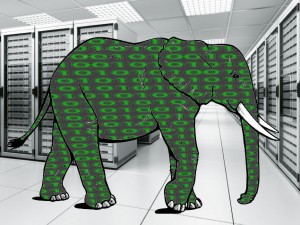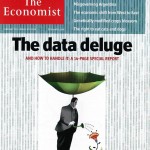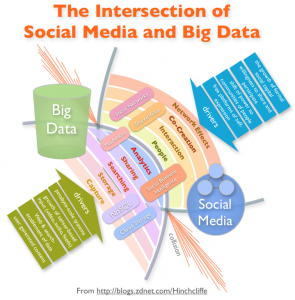 I love data, I get excited by datasets that have hidden meaning, data that is trying to deliver an insight and is just waiting for me to tabulate and cross-match, or plot it on a chart to ask the right question and weed out the insight behind the figures. But I’m a geek, and beyond being OK, it’s normal.
I love data, I get excited by datasets that have hidden meaning, data that is trying to deliver an insight and is just waiting for me to tabulate and cross-match, or plot it on a chart to ask the right question and weed out the insight behind the figures. But I’m a geek, and beyond being OK, it’s normal.
This isn’t the case for 90+% of marketers today, and this is a problem. A small problem today as we rely only slightly on data to make marketing decisions, but a much bigger one tomorrow as marketing evolves, and very soon this will be the elephant in the room that marketers are tripping over themselves to avoid.
The last few years have seen excitement in the marketing world around digital, social, mobile and now with the combination of the three, the buzzword for 2012 is SoLoMo as we start to see real activation of these different elements coming together. But what this means for marketers is an ever increasing number of channels and options as to how they can deliver their message – it is no longer a simple divvy up of the marketing budget between TV and print, or online and offline; suddenly the exploding number of different channels means that managing a marketing budget needs some serious portfolio management skills.
Portfolio management means research, comparative variables, the relationships between channels and an understanding of the ROI of them; this is starting to sound more about numbers and statistics than the traditional approach of making the coolest idea come to life, regardless of the platform on which it resides. If we need to stop using our gut feeling and start being scientific about our approach, we need the skills to be able to understand, analyse and decide on the relative merits and performance of all our options.
 Suddenly marketing is having a rude awakening to economic theory, as we look for hard data to give us effective ROI to be able to allocate resources. This is scary for traditional marketers and creative agencies as they still don’t know (or want to know) how to effectively measure the comparative returns on a TV spot versus a coupon promotion via SMS.
Suddenly marketing is having a rude awakening to economic theory, as we look for hard data to give us effective ROI to be able to allocate resources. This is scary for traditional marketers and creative agencies as they still don’t know (or want to know) how to effectively measure the comparative returns on a TV spot versus a coupon promotion via SMS.
So this raises a couple of scary questions for the marketing world:
- Where is the data and how can we harness it?
- Who can actually understand and interpret it?
- How do we apply this new way of thinking to our traditional approach?
The first answer to this is Big Data, building intelligent models that can connect the dots between the multiple marketing data sources we have today:
- Campaign activity and results from services like ExactTarget, data on impressions and clicks from media agencies and redemption of coupons

- Site centric activity and content consumption from WebTrends, SiteCatalyst (and even sometimes Google Analytics)
- Prospect and customer databases with demographic information, and sometimes even business results
- Social buzz, brand WOM and social media activity
The intersection between the social worlds and our existing data sets is where the knowledge and insights will explode; as we start to connect what we know about our prospects and customers with what they express their interests to be on the wider web, we’ll start to develop some real insights that can drive 1-2-1 communication and business in 2012.
The second question is all about skill set, as marketing comes of age, so do its people need to evolve. The application of economic principles need the right people – Who are they? Where are they? McKinsey says that every industry will need these people and there is going to be an ugly rush to bring them on board. To begin with we need people to manage, link and package the data, then we need those who can present it in a meaningful format and finally we need marketers who can tease out the knowledge that lies within it. Just this people challenge is going to be a tall order.
Finally, applying these techniques to existing marketing channels is the true leap of faith – being able to accept that suddenly our best sources of revenue (like TV production) could go out the window may make us need to rethink our advertising agency business model completely. Companies that are nimble and ready for this change – probably those staffed by the Flux Generation – will be best placed to adapt and move with the new marketing models.
Data is coming, big data is coming. We need to learn to understand it, learn to use it and learn to love it!
Links & sources:
McKinsey & Company – Big data: The next frontier for innovation, competition, and productivity
Quaero – Customer Data Management with “Big Data”
John Myers – Big Data Requires Better Decisions
ZDNet – How social media and big data will unleash what we know

